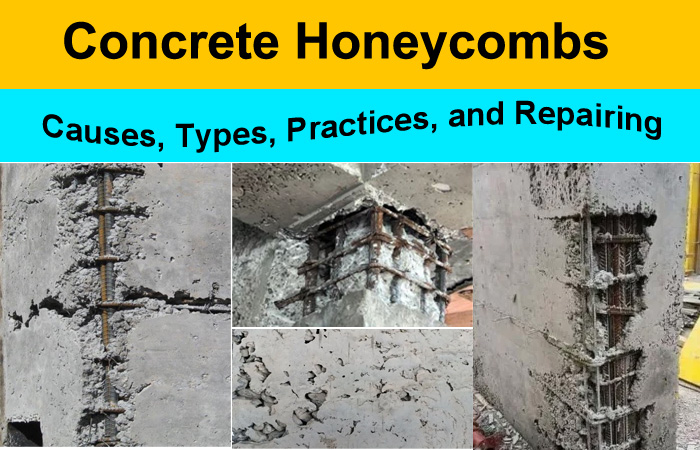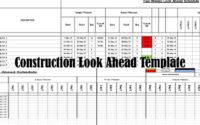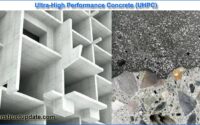Honeycombs Causes, Types, Practices, and Repairing
What are Honeycombs?
Honeycombs are the hollow spaces and cavities left in concrete mass on the surface or inside the concrete mass which is caused by the mortar not filling the spaces between the coarse aggregates particles.
Types of Honeycombs.
- Small Size Honeycombs (Depth is less than 25mm)
- Moderate Size Honeycombs (Deeper than 25 mm but steel bars have not exposed)
- Larger Size Honeycombs (Deeper than 25mm & bars have come out)
Where can we find Honeycobs?
Honeycombs which are on the sides and bottoms are visible to naked eyes and can be detected when shuttering is removed. Honeycombs that are inside the mass of concrete can only be detected by advanced techniques like ultrasonic testing etc.
- Effects of Honeycombs
- Water and air enters inside
- Rusting and corrosion of reinforcement
- Reduce durability
- Less Structural Strength
- Reduces the load-bearing capacity
Causes of Honeycombs
- Poor workability
- Poor grading of aggregate
- Grout leak
- Movement of formwork
- Improper Compaction
- Improper cover & placement of rebar

Practices to minimize Honeycombing in concrete
- Use a mix with appropriate workability for the situation in which it is to be placed.
- Ensure the mix has sufficient fines to fill the voids between the coarse aggregate.
- Use proper methods of compacting and ensure the concrete is fully compacted
- Use proper methods of placing concrete
Avoid segregation
Avoid delays
Pour by layers
Proper cover block thickness should be maintained for particular concrete structures. (Eg: walls, columns, staircases – 25mm, slabs- 40mm, beams- 50mm, pile caps- 75mm)
Sufficient cover blocks should be provided
Rebar congestion can be minimized by having larger (that is, lesser) rebar or by increasing the sectional dimensions of elements where possible.
Ensure the reinforcement layout and the section shape will permit the concrete to flow around the reinforcement and completely fill the forms.
Repairing Honeycombs For small & moderate honeycombs
Hack and remove the loose particles in order to appear sound surface.
Surface is cleaned by water jet to obtain dust free surface.
Construction grout is applied.
Texture and color should then be matched for aesthetic finish.
Curing is done.
Repairing Honeycombs For large Honeycombs
Hack & remove the weak concrete to expose sound concrete surface.
To keep clearance around reinforcement 12mm thick concrete layer is removed.
By using water jet surface is cleaned
Barra emulsion is used as a bonding agent.
Over the wet surface barra emulsion is applied and before drying, 1:2 cement mortar is applied
After mortar has set sufficiently, final surface is prepared by trowel.
Texture and colour is matched for aesthetic finish.
Curing is done.




